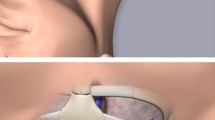Abstract
This study was designed to compare the incidence of mechanical, thrombotic and infective complications in transjugular (IJV) and axillosubclavian (SCV) central venous catheters (CVC) in patients with hematological malignancy. In a prospective observational trial, 131 consecutive patients were classified into two groups: Group A included those with IJV catheter insertions under sonography guidance (n=61) and group B included those with SCV insertions under venography guidance (n=70). After catheter placement, patients were prospectively acquired and recorded to obtain the following data: success rates, total catheter days, and complication episodes per 100 catheter days. All procedures were technically successful. Total catheter days were 7800 (group A) versus 8391(group B). Mechanical complications were observed in three cases from group A and 11 from group B, with an incidence rate of 0.04 per 100 catheter days versus 0.13 (P=0.043), respectively. Two symptomatic thrombotic complications were observed in group B. The number of infective complications was not significantly different between the two groups (P=0.312). There was no difference in infective complication incidence between the two groups. To minimize catheter-related mechanical and thrombotic complications, however, the IJV approach is superior to the SCV approach.
Similar content being viewed by others
References
Hickman RO, Buckner CD, Clift RA, Sander JE, Stewart P, Thomas ED (1979) A modified right atrial catheters for access to the venous system in marrow transplant recipients. Surg Gynecol Obstet 148:871–875
Cockburn JF, Eynon CA, Virji N, Jackson JE (1992) Insertion of Hickman central venous catheters by using angiographic techniques in patients with hematological disorders. Am J Roentgenol 159:121–124
Reeves AR, Seshadri R, Trerotola SO (2001) Recent trends in central venous catheter placement: a comparison of interventional radiology with other specialties. J Vasc Interv Radiol 12:1211–1214
Denny DF (1992) The role of the radiologist in long-term central vein access. Radiology 185:637–638
Schillinger F, Schillinger D, Montagnac R, Milcent T (1991) Post-catheterization vein stenosis in haemodialysis: comparative angiographic study of 50 subclavian and 50 internal jugular accesses. Nephrol Dial Transplant 6:722–724
Trerotola SO, Johnson MS, Harris VJ, Shah H, Ambrosius WT, McKusky MA, Kraus MA (1997) Outcome of tunneled hemodialysis catheters placed via the right internal jugular vein by interventional radiologists. Radiology 203:489–495
Silberzweig JE, Mitty HA (1998) Central venous access: low internal jugular vein approach using imaging guidance. Am J Roentgenol 170:1617–1620
Macdonald S, Watt AJ, McNally D, Edwards RD, Moss JG (2000) Comparison of technical success and outcome of tunneled catheters inserted via the jugular and subclavian approaches. J Vasc Interv Radiol 11:225–231
Trerotola SO, Kuhn-Fulton J, Johnson MS, Shah H, Ambrosius WT, Kneebone PH (2000) Tunneled infusion catheters: increased incidence of symptomatic venous thrombosis after subclavian versus internal jugular venous access. Radiology 217:89–93
Lund GB, Trerotola SO, Scheel PF Jr, Savader SJ, Mitchell SE, Venbrux AC, Osterman FA (1996) Outcome of tunneled hemodiapysis catheters placed by radiologists. Radiology 198:467–472
Ulz L, Petersen FB, Ford R, Blakely W, Bennett C, Grimm M, Hickman RO (1990) A prospective study of complication in Hickman right-atrial catheters in marrow transplant patients. J Parenter Enteral Nutr 14:27–30
D’Angelo P, Uderzo C, Rizzari C, Vigano EF, Rovelli A, Gornati G, Codecasa G, Locasciulli A, Masera G (1992) Central venous catheter-related complications after bone marrow transplantation in children with hematological malignancies. Bone Marrow Transplant 9:113–117
Groeger JS, Lucas AB, Thaler HT, Friedlander-Klar H, Brown AE, Kiehn TE, Armstrong D (1993) Infectious morbidity associated with long-term use of venous access devices in patients with cancer. Ann Intern Med 119:1168–1174
Haire WD, Lieberman RP, Lund GB, Edney JA, Kessinger A, Armitage JO (1991) Thrombotic complications of silicone rubber catheters during autologous marrow and peripheral stem cell transplantation: prospective comparison of Hickman and Groshong catheters. Bone Marrow Transplant 7:57–59
Keung YK, Watkins K, Chen SC (1994) Comparative study of infectious complications of different types of chronic central venous access devices. Cancer 73:2832–2837
Petersen FB, Clift RA, Hickman RO, Sanders JE, Meyers JD, Kelleher J, Buckner CD (1986) Hickman catheters complications in marrow transplant recipients. J Parenter Enteral Nutr 10:58–62
McGee DC, Gould MK (2003) Preventing complications of central venous catheterization. N Engl J Med 348:1123–1133
Monreal M, Lafoz E, Ruiz J, Valls R, Alastrue A (1991) Upper-extremity deep venous thrombosis and pulmonary embolism. A prospective study. Chest 99:280–283
Pearson ML (1996) Guideline for prevention of intravascular device-related infections: an overview. The Hospital Infection Control Practices Committee. Am J Infect Control 24:262–293
Garner JS, Jarvis WR, Emori TG, Horan TC, Hughes JM (1988) CDC definitions for nosocomial infections. Am J Infect Control 16:128–140
O’Grady NP, Alexander M, Dellinger EP, Gerberding JL, Heard SO, Maki DG, Masur H, McCormick RD, Mermel LA, Pearson ML, Raad II, Randolph A, Weinstein RA (2002) Guidelines for the prevention of intravascular catheter-related infections. Centers for disease control and prevention. MMWR 51:1–26
Polderman KH, Girbes AR (2002) Central venous catheter use. Part 1. Mechanical complications. Intensive Care Med 28:1–17
Brown-Smith JK, Stoner MH, Barley ZA (1990) Tunneled catheter thrombosis: factors related to incidence. Oncol Nurs Forum 17:543–549
Koksoy C, Kuzu A, Erden I, Akkaya A (1995) the risk factors in central venous catheter-related thrombosis. Aust N Z J Surg 65:796–798
Author information
Authors and Affiliations
Corresponding author
Rights and permissions
About this article
Cite this article
Lee, S.H., Hahn, S.T. Comparison of complications between transjugular and axillosubclavian approach for placement of tunneled, central venous catheters in patients with hematological malignancy: a prospective study. Eur Radiol 15, 1100–1104 (2005). https://doi.org/10.1007/s00330-005-2641-0
Received:
Revised:
Accepted:
Published:
Issue Date:
DOI: https://doi.org/10.1007/s00330-005-2641-0




